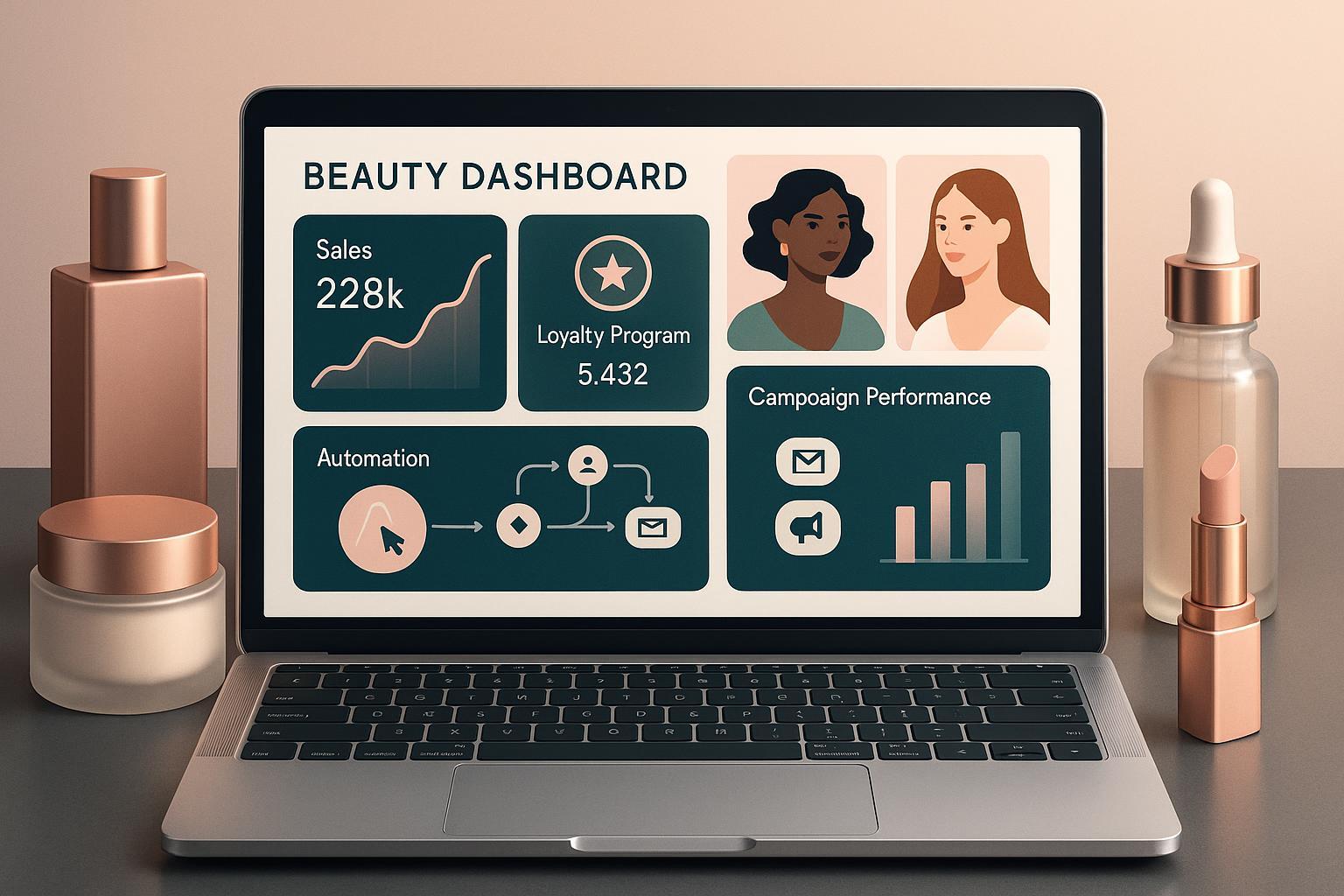Innovative Customer Retention Strategies for Beauty Brands in 2025

Introduction: The New Era of Beauty Brand Retention
In 2025, the beauty industry faces record competition, evolving consumer privacy standards, and omni-channel disruption. Retaining customers is no longer about repeating yesterday’s tactics—it’s a strategic, data-driven imperative. Top beauty brands now unify their customer journeys, leverage advanced analytics, and automate personalized engagement to unlock higher customer lifetime value (CLV), reduce churn, and create loyal brand advocates. So, what truly works for beauty marketers aiming to outperform in this dynamic landscape?
Pain Points: Why Traditional Retention Tactics Fall Short
Beauty brands contend with several modern challenges:
- High churn rates: Brand switching and low repeat purchase frequency persist—industry data shows beauty churn outpaces many retail verticals. (Klaviyo benchmarks)
- Fragmented customer data: Disconnected analytics block precise campaign targeting and measurement.
- Low loyalty program adoption: While 88% of beauty shoppers desire loyalty programs, only 54% of brands offer them. (LoyaltyLion report)
- Inadequate personalization: Mass campaigns underwhelm modern shoppers who expect tailored experiences and offers.
In 2025, the winners will be those wielding real-time data, innovative segmentation, and omni-channel automation—across the entire customer lifecycle.
8 Innovative Retention Strategies for Beauty Brands in 2025
1. Multi-Touch Attribution: Maximize Retention Impact Across Channels
Multi-touch attribution lets marketers pinpoint exactly which campaigns and channels drive repeat purchases and long-term loyalty—enabling smart resource allocation and campaign optimization.
- Strategy: Adopt advanced attribution platforms (e.g., Attribuly) to unify and analyze customer journeys across ads, email, social, SMS, and site interactions.
- Evidence: Brands using multi-touch attribution report up to 30% higher retention rates by reallocating spend to channels proven to drive loyalty.
- Best Practice: Map the customer lifecycle, break data silos, and invest in attribution workflows for all retention campaigns.
2. Granular Segmentation with Predictive Analytics
AI-driven segmentation enables beauty brands to identify micro-audiences (VIPs, lapsed buyers, replenishment cycles) and tailor messaging for maximum impact.
- Strategy: Leverage AI and predictive analytics (Attribuly, Klaviyo) to score customers by CLV and churn risk, then automate segment-specific triggers.
- Case Study: AS Beauty Group increased profitability with high-volume, targeted campaigns across 12+ segments, reducing churn and boosting engagement (Klaviyo).
- Actionable Step: Build and test 8+ audience segments, using purchase intent signals and lifecycle stage data.
3. Loyalty Program Innovation & Personalization
Personalized loyalty programs—powered by unified customer data—drive repeat purchase rates and build emotional brand affinity.
- Strategy: Integrate platforms like LoyaltyLion/Yotpo, and connect loyalty data with campaign automation (Attribuly/Klaviyo) for real-time, exclusive offers and dynamic rewards.
- Data Point: Tata Harper achieved a 139% YoY revenue lift from loyalty-triggered flows. (Klaviyo benchmarks)
- Actionable Step: Launch segmented loyalty campaigns (VIP, new joiners, dormant members) with tailored rewards and referral incentives.
4. Triggered Automation Flows: Replenishment, Win-Back, VIP Recognition
Automation is key for high-frequency, timely engagement—especially for retention-critical journeys like replenishment, win-back, and personalized thanks.
- Strategy: Orchestrate automated flows using Shopify Flow, Klaviyo, or Attribuly; trigger based on lifecycle, purchase frequency, and segment attributes.
- Case Study: Happy V saw a 430% YoY uplift in Klaviyo-attributed revenue after segmenting and automating loyalty flows.
- Actionable Step: Deploy automated flows for refill reminders, post-purchase thank yous, and birthday/anniversary exclusives.
5. Unified Data Platform for Omnichannel Personalization
Success in retention depends on data unification—harmonizing all customer touchpoints for personalized, privacy-conscious engagement.
- Strategy: Use Attribuly or equivalent data lake/CDP to consolidate all event and profile data, ensuring accurate segmentation and privacy-compliant communication.
- Market Insight: Brands with unified data see up to 40% faster campaign deployment and actionable analytics for retention campaigns.
- Actionable Step: Audit data sources and migrate to a unified analytics platform for all retention activities.
6. Privacy-First Personalization for Cookieless Commerce
2025 is the era of privacy-first engagement. Brands must personalize while respecting consumer data rights and consent boundaries.
- Strategy: Implement server-side analytics, collect zero- and first-party data, and dynamically personalize within privacy constraints (Attribuly excels here).
- Expert Opinion: Leading beauty brands attribute reduced opt-out rates and increased engagement to respectful, consent-led personalization.
- Actionable Step: Review data collection and personalization workflows for privacy compliance and transparency.
7. Cross-Channel Retargeting: Integrated Orchestration
Meeting your customers on every channel is vital—but only when the orchestration is seamless and analytics-powered.
- Strategy: Deploy integrated retargeting flows (email/SMS/ads/social) with unified analytics, using platforms like Attribuly to connect and measure.
- Evidence: Cross-channel campaigns typically achieve 2x repeat purchase rates over single-channel efforts (Shopify benchmark).
- Actionable Step: Set up a recurring schedule of cross-channel retargeting (including social, email, and paid ads) mapped to retention segments.
8. Actionable Benchmarking & Continuous Optimization
Top beauty brands continuously track retention KPIs, AB test campaigns, and adjust their tactics using real-time analytics.
- Strategy: Harness robust reporting (Attribuly/Klaviyo) to monitor repeat rates, CLV, churn, and flow-level ROI.
- Case Example: DKNY reduced email volume 24% YoY while boosting click rate by 8% through segmented, data-backed automation.
- Actionable Step: Track retention KPIs weekly, set up AB tests for each retention workflow, and benchmark performance against industry leaders.
Checklist: Implementing 2025’s Top Retention Strategies
| Practice | Key Tool(s) | Core KPI | Action Item |
|---|---|---|---|
| Multi-Touch Attribution | Attribuly | Retention Rate | Deploy attribution flows for all campaigns |
| Granular Segmentation & Predictive Analytics | Attribuly, Klaviyo | CLV, Churn | Define segments, set up predictive scoring |
| Loyalty Program Innovation | LoyaltyLion, Yotpo | Repurchase Rate | Personalize segmented loyalty workflows |
| Triggered Automation Flows | Klaviyo, Shopify Flow | Automation Revenue | Launch replenishment, win-back automations |
| Unified Data Platform | Attribuly | Speed to market | Migrate to unified analytics |
| Privacy-First Personalization | Attribuly | Opt-out Rate | Audit privacy, enable server-side tracking |
| Cross-Channel Retargeting | Attribuly, Klaviyo | Repeat Purchase | Automate multi-channel retargeting workflow |
| Benchmarking & Optimization | Attribuly, Klaviyo | ROI, AB Test | Weekly KPI tracking and optimization |
Tools to Elevate Your Beauty Brand’s Retention in 2025
- Attribuly: Multi-touch attribution, AI segmentation, omni-channel analytics, automation triggers (Learn more)
- Klaviyo: Retention automation, segmentation, campaign analytics (Klaviyo benchmarks)
- Shopify Flow: No-code automation, segmentation, campaign orchestration (Shopify Flow)
- LoyaltyLion/Yotpo: Loyalty program management, UGC rewards, referral automation (LoyaltyLion Guide)
Conclusion: Power Retention with Unified Analytics & Automation
For beauty brands in 2025, retention isn’t accidental—it’s architected. The path to sustainable growth runs through data unification, predictive segmentation, personalized automation, privacy-safe engagement, and continuous benchmarking. As the competitive landscape intensifies, the brands leveraging platforms like Attribuly to orchestrate, automate, and measure their customer retention will be best positioned for loyalty and profitability.
Ready to revolutionize how your beauty brand retains customers?
Explore Attribuly for a personalized analytics consultation or to request a demo and see how unified data, real-time attribution, and automation can drive retention in 2025.
Further Reading & References
